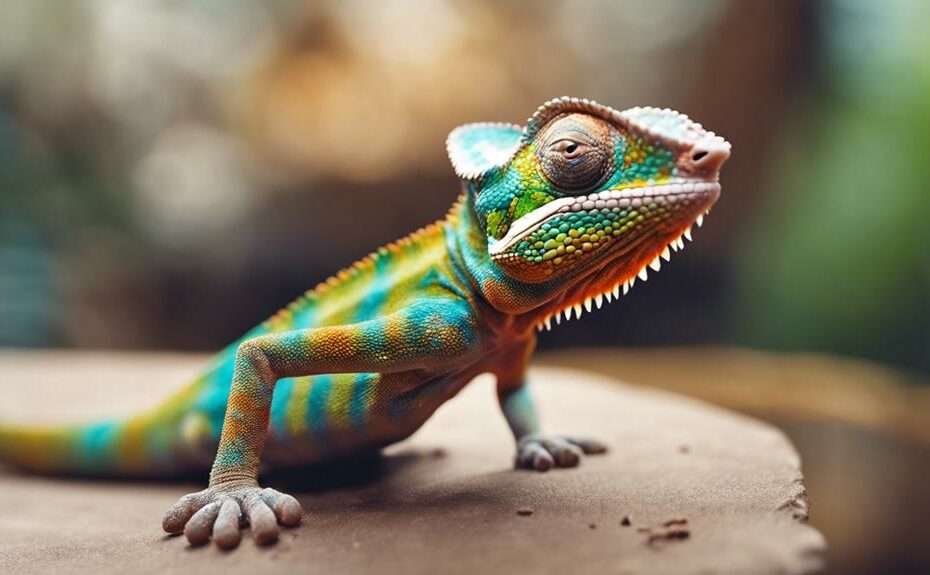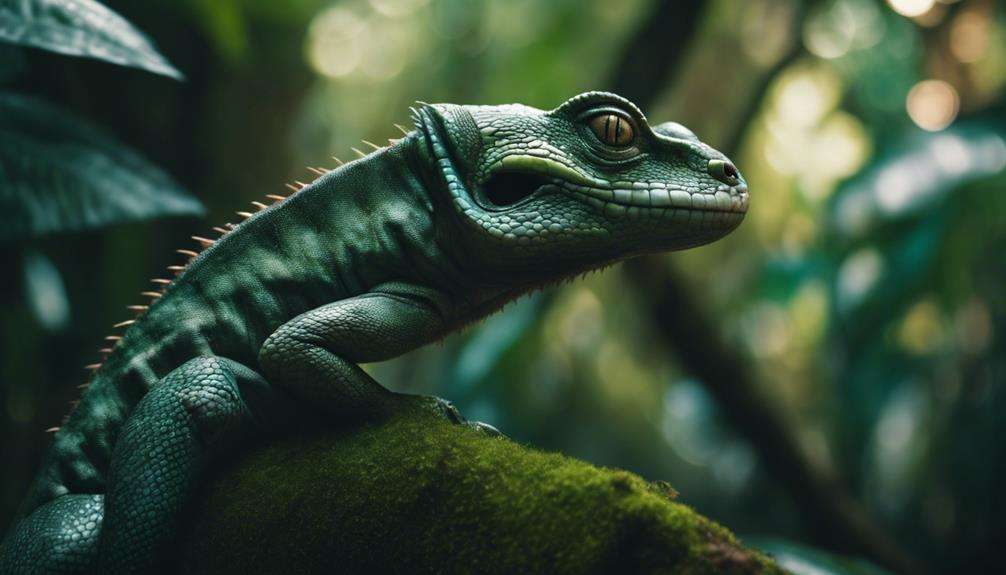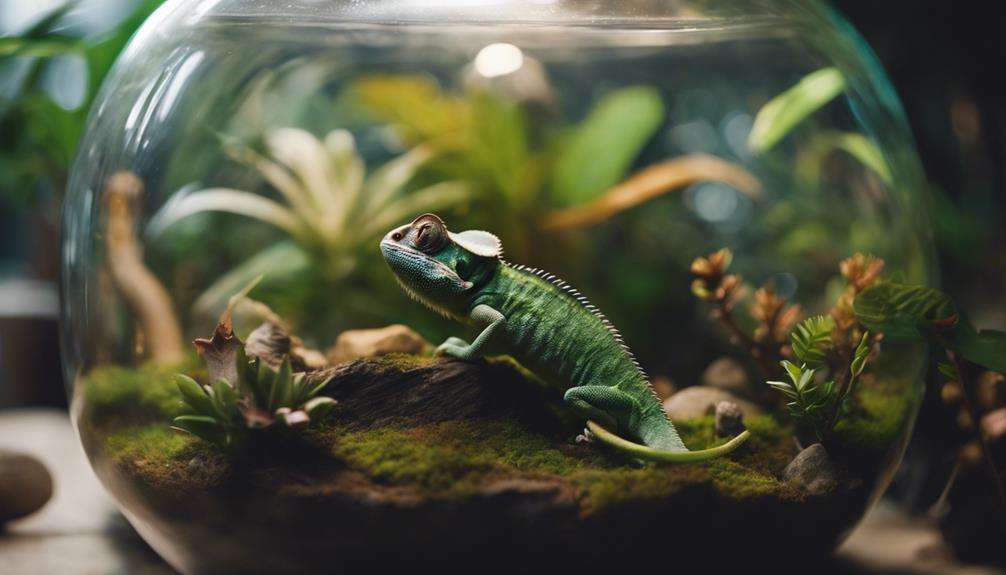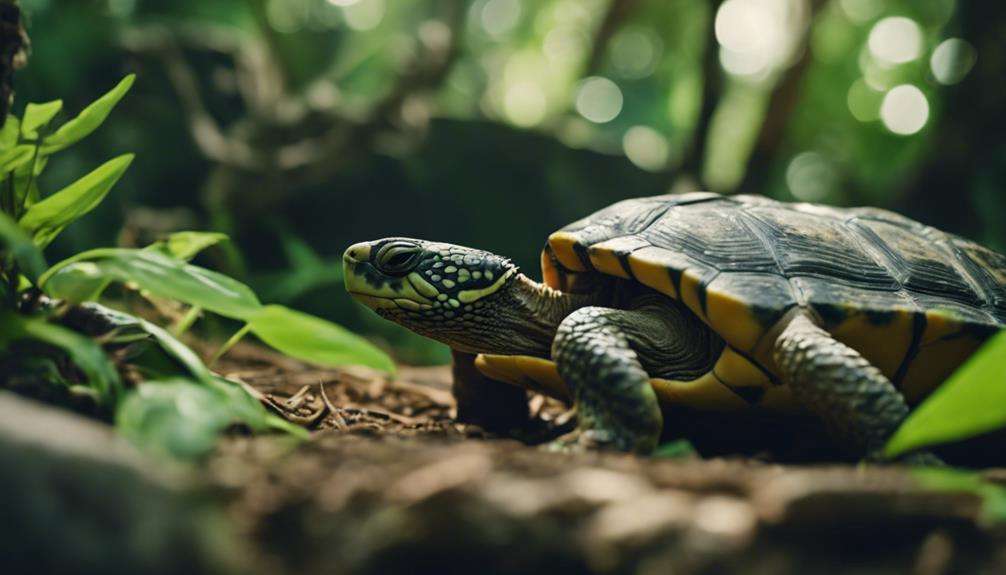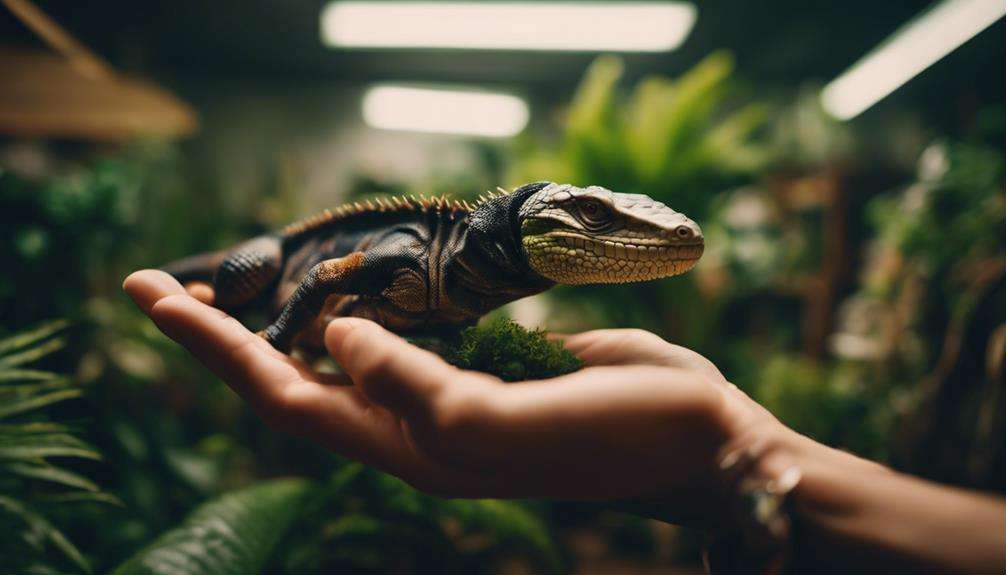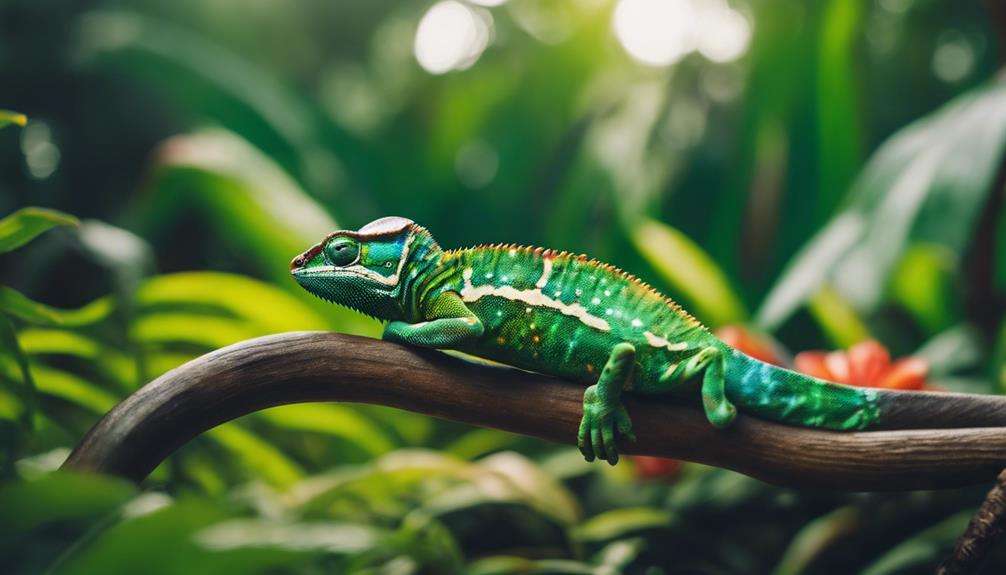Did you know that some rare reptile species have adaptations so unique they seem almost otherworldly?
Discover the Thorny Devil Lizard's intricate skin patterns that aid in camouflage and temperature regulation, or the Mata Mata Turtle's bizarre appearance designed for ambush hunting.
These seven reptiles possess adaptations that challenge conventional understanding of survival strategies in the animal kingdom.
Explore further to uncover the secrets of these extraordinary creatures and the remarkable ways they have adapted to thrive in their respective habitats.
Key Takeaways
- Unique reptile species like Thorny Devil Lizard and Satanic Leaf-Tailed Gecko showcase specialized adaptations for survival.
- Venomous hunting techniques, like those of the Spider Tailed Horned Viper, demonstrate cunning strategies for capturing prey.
- Conservation challenges, such as illegal pet trade and habitat loss, threaten rare reptile populations worldwide.
- Tuatara's distinct features and New Zealand's biodiversity symbolize the importance of preserving these unique reptiles.
Thorny Devil Lizard
With its spiky exterior and unique water-collecting adaptation, the Thorny Devil Lizard stands out as a fascinating reptile species native to Australia. This reptile, scientifically known as Moloch horridus, showcases remarkable adaptations that contribute to its survival in harsh environments. The Thorny Devil Lizard's intimidating spikes serve as a defense mechanism against predators, deterring potential threats with its sharp appearance.
One of the most intriguing adaptations of this species is its ability to collect water through capillary action from its skin. In arid regions where water sources are scarce, this mechanism enables the Thorny Devil Lizard to thrive by efficiently utilizing any available moisture. Additionally, the lizard's distinct coloration aids in camouflage, allowing it to blend seamlessly into its surroundings and avoid detection by predators.
Despite its aggressive exterior, the Thorny Devil Lizard primarily feeds on ants, using its specialized tongue to capture its prey. This unique combination of defensive adaptations, water-collecting mechanism, and camouflage makes the Thorny Devil Lizard a truly extraordinary reptile species worthy of admiration and study.
Mata Mata Turtle
The Mata Mata Turtle, scientifically known as Chelus fimbriata, captivates with its unique appearance and specialized adaptations for stealthy hunting in its natural South American habitat. This turtle is a weird yet fascinating creature, sporting a flattened head adorned with numerous flaps of skin and a rough, knobby shell that aids in camouflage amidst the murky waters it inhabits. Mata Mata turtles are adept ambush predators, utilizing their cryptic appearance to blend seamlessly into their surroundings, patiently lying in wait for unsuspecting prey to draw near.
One of the most intriguing aspects of these turtles is their specialized feeding technique. Lacking teeth, Mata Matas rely on creating a vacuum with their mouth to suck in their food, swiftly capturing fish, insects, and even small vertebrates with precision. Their preference for slow-moving, muddy waters further enhances their hunting prowess, providing ample opportunities to conceal themselves and employ their unique adaptations effectively. These remarkable turtles exemplify nature's ingenuity in creating specialized predators perfectly suited to their environment.
Satanic Leaf-Tailed Gecko
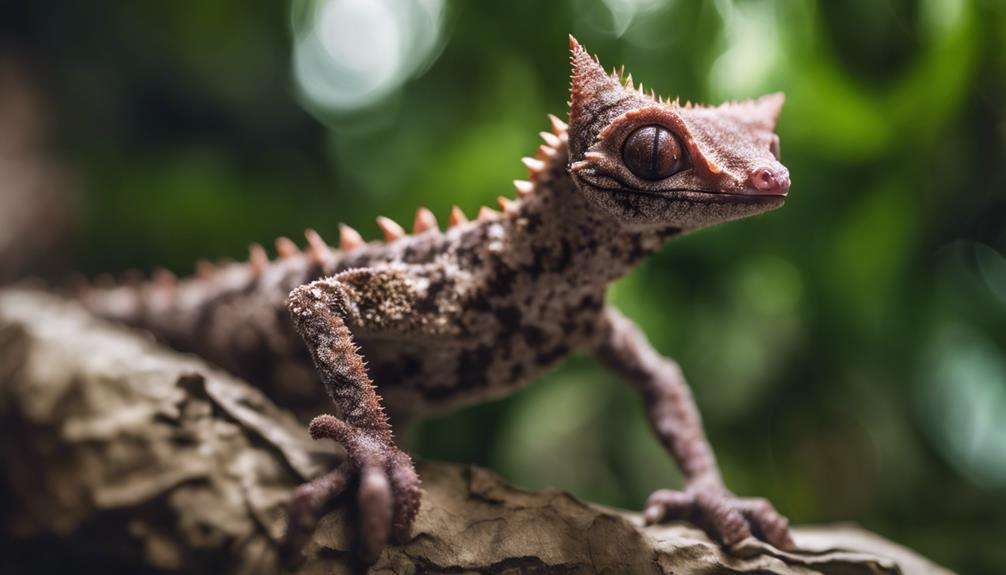
The Satanic Leaf-Tailed Gecko, scientifically known as Uroplatus phantasticus, amazes with its leaf-like appearance, seamlessly blending into Madagascar's lush forests.
Its unique body shape and coloration serve as the ultimate camouflage, allowing this gecko to evade predators effectively.
Camouflage Techniques Used
Demonstrating a masterful display of mimicry, the Satanic Leaf-Tailed Gecko expertly employs camouflage techniques to blend seamlessly with its leafy surroundings in Madagascar's lush forests.
- The Satanic Leaf-Tailed Gecko uses its leaf-like appearance to mimic dead leaves with intricate patterns and textures on its skin.
- Its body shape and coloration aid in evading predators by seamlessly blending in with the foliage.
- This gecko's camouflaging skills make it nearly invisible to both predators and prey.
- The cryptic camouflage of the Satanic Leaf-Tailed Gecko highlights the remarkable diversity of camouflage strategies in the animal kingdom.
Unique Leaf-Shaped Tail
With its unique leaf-shaped tail, the Satanic Leaf-Tailed Gecko showcases a remarkable evolutionary adaptation for blending seamlessly into its forest habitat.
This specialized tail, resembling a dead leaf, serves as a crucial tool for camouflage, allowing the gecko to evade predators by mimicking its surroundings.
The intricate design of the tail, with its leaf-like texture and coloration, enables the gecko to merge effortlessly with the foliage, making it a master of disguise in its environment.
Through the process of natural selection, the Satanic Leaf-Tailed Gecko has developed this extraordinary feature as a survival mechanism, highlighting the power of evolutionary adaptation in shaping the characteristics of species like this gecko.
Habitat and Behavior Adaptations
Adapting to its forest environment, the Satanic Leaf-Tailed Gecko showcases remarkable camouflage through its unique flattened body and leaf-like tail.
- These geckos can blend seamlessly with tree bark, making them nearly invisible to predators and prey.
- Specialized skin patterns resembling dead leaves help them avoid detection by predators.
- Their ability to slightly change color based on the environment enhances their camouflage and survival.
- Satanic Leaf-Tailed Geckos exhibit exceptional mimicry, resembling dried leaves or bark to remain cryptic and evade detection in their natural habitat.
Through these adaptations in camouflage and mimicry, the Satanic Leaf-Tailed Gecko has evolved to thrive in its challenging forest surroundings, ensuring its survival in the wild.
Blue Malayan Coral Snake
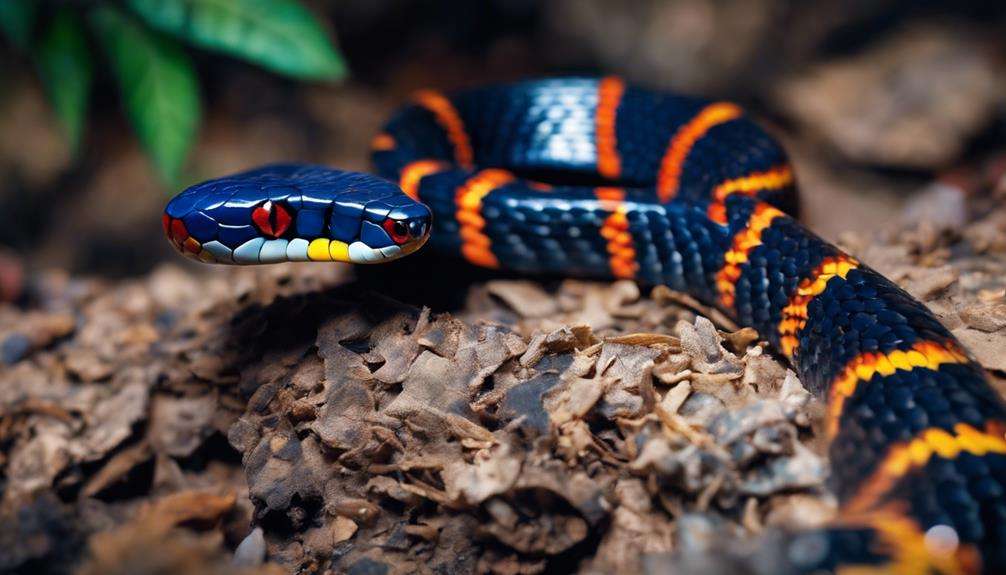
The Blue Malayan Coral Snake, scientifically known as Calliophis bivirgata, boasts a striking appearance with its distinct blue and black banded pattern along its slender body. This venomous snake species, found in Southeast Asia, is highly dangerous due to its neurotoxic venom, capable of causing paralysis and even death in its prey or perceived threats.
Equipped with a specialized venom delivery system consisting of short, fixed fangs positioned at the front of the mouth, these snakes efficiently envenomate their targets. Despite their visually striking blue and black bands, these coral snakes are elusive creatures that tend to avoid human encounters by inhabiting forested regions and shying away from confrontations.
Their secretive behavior and potent venom make them a formidable presence in their natural habitat, serving as a reminder of the dangers posed by highly venomous reptiles in the wild.
Spider Tailed Horned Viper
You observe the Spider Tailed Horned Viper's unique tail adaptation, resembling a spider's appearance with bulbous segments and flattened scales.
This specialized feature serves as a camouflage and ambush technique, aiding the snake in attracting prey.
Unique Tail Adaptation
With a tail that cleverly mimics the appearance of a spider, the Spider Tailed Horned Viper utilizes a unique adaptation to enhance its hunting strategies. This specialized tail adaptation is crucial for the viper's survival and feeding strategies. Here are some intriguing points about this remarkable evolutionary feature:
- The viper wiggles its tail to attract birds, tricking them into approaching.
- Once the bird is within striking distance, the viper swiftly captures its prey.
- This mimicry behavior highlights the viper's edge in hunting techniques.
- The spider-like tail is an evolutionarily distinct trait that sets this viper apart from other species.
Camouflage and Ambush
Paving the way for successful predation, the Spider Tailed Horned Viper employs its unique tail tip to master the art of camouflage and ambush in the desert landscape.
This rare reptile species showcases remarkable camouflage abilities, with its tail tip resembling a spider, allowing it to blend seamlessly into the sandy surroundings.
By utilizing this unique tail adaptation, the viper can lure unsuspecting prey by mimicking the movements of a spider, increasing its hunting success through ambush tactics.
This evolutionary strategy not only aids in hunting but also serves as a defense mechanism against potential threats.
The viper's ability to conceal itself through camouflage highlights the intricate adaptations reptiles have developed for survival in diverse habitats, making it a fascinating subject of study.
Venomous Hunting Technique
The Spider Tailed Horned Viper, a venomous snake species native to western Iran, employs a unique hunting technique utilizing its tail tip that mimics a spider to attract and capture prey. When hunting, this snake showcases remarkable adaptations:
- Tail Tip Mimicry: The viper's tail tip resembles a spider, enticing unsuspecting birds.
- Prey Attraction: By wiggling its tail, the snake lures in birds, mistaking it for prey.
- Venomous Strike: Once the bird approaches, the viper swiftly strikes, injecting venom for subduing.
- Specialized Adaptation: This strategy highlights the snake's evolution for bird capture, ensuring hunting success in its environment.
Pan's Box Turtle
Pan's Box Turtle, adorned with a mesmerizing shell pattern, is a critically endangered reptile species native to China and Vietnam. The intricate markings and colors on its shell make it a sought-after species in the illegal pet trade, further endangering its existence in the wild. The illegal pet trade, coupled with habitat destruction and fragmentation, poses significant challenges to the survival of Pan's Box Turtle. Due to these threats, conservation efforts are imperative to safeguard the remaining populations of this unique turtle species.
Conservation initiatives focus on protecting the habitats where these turtles reside, implementing anti-poaching measures, and raising awareness about the importance of preserving Pan's Box Turtle in its natural environment. Efforts to combat the illegal pet trade through stricter enforcement of laws and regulations are also crucial in the conservation of this rare reptile species. By addressing these key issues, there's hope for the recovery and long-term survival of Pan's Box Turtle in the wild.
Tuatara
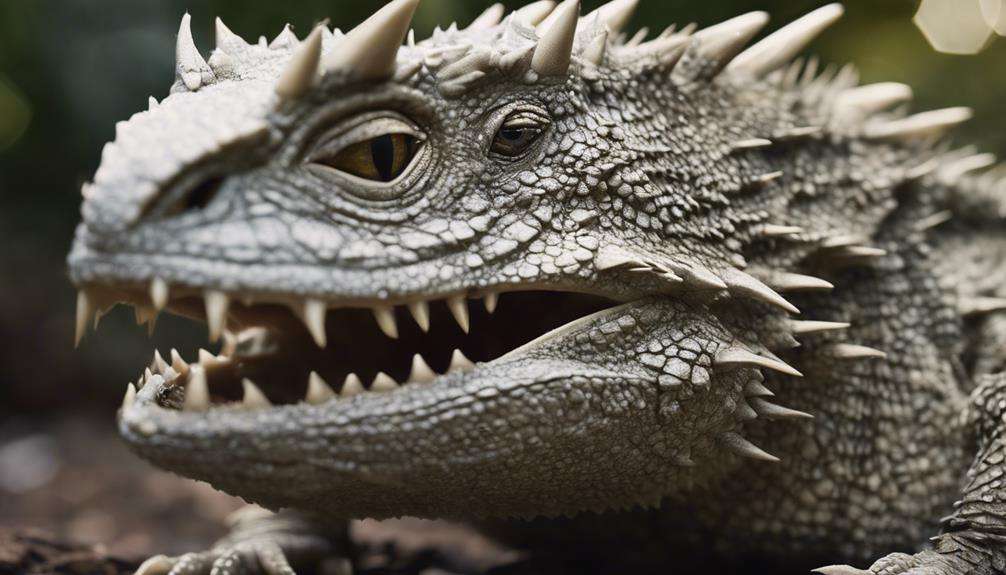
With its fascinating evolutionary history and unique anatomical features, the Tuatara stands out as a remarkable reptile species native to New Zealand. These ancient creatures have captivated scientists and nature enthusiasts alike for various reasons:
- Unique Jaw Structure: Tuataras possess a distinctive jaw structure with two rows of teeth on the upper jaw and one row on the lower jaw, facilitating efficient chewing of their prey.
- Longest-Living Reptile Species: Known for their longevity, Tuataras can live for over a century, making them one of the longest-living reptiles on Earth.
- Hibernate: Despite their cold-blooded nature, Tuataras have adapted to withstand cold temperatures by hibernating during the winter months, conserving energy until conditions improve.
- Endemic to New Zealand: Found exclusively in New Zealand, Tuataras are emblematic of the country's unique biodiversity and serve as a living link to its prehistoric past.
Frequently Asked Questions
What Are the Coolest Reptile Adaptations?
When it comes to reptile adaptations, you'll be amazed by their camouflage techniques to blend in, thermal regulation to control body temperature, predator avoidance strategies, and even regeneration abilities to heal wounds and regrow lost body parts.
What Is the Rarest Reptile in the World?
You might wonder, "What is the rarest reptile in the world?" The Yangtze Giant Softshell Turtle holds that title. Endangered species like this highlight the vital need for conservation efforts to protect them.
What Is the Greatest Reptile Adaptation?
When it comes to the greatest reptile adaptation, nothing beats the Pig-Nosed Turtle's unique ability to breathe underwater through special organs. This evolutionary marvel allows them to stay submerged for days, a remarkable survival advantage.
What Is the Most Unique Reptile in the World?
In the world of reptiles, one stands out uniquely. Its camouflage mastery is legendary. You witness the leaf chameleon, blending seamlessly with surroundings, a true master of disguise among rare reptiles.
Conclusion
As you marvel at the intricate adaptations of these rare reptile species, remember that nature's creativity knows no bounds.
Like a masterpiece painted by the hand of evolution, each unique trait serves a vital purpose in the delicate balance of their ecosystems.
Let these remarkable creatures inspire awe and admiration in your heart, like a symphony of survival playing out in the vast and wondrous tapestry of the natural world.
